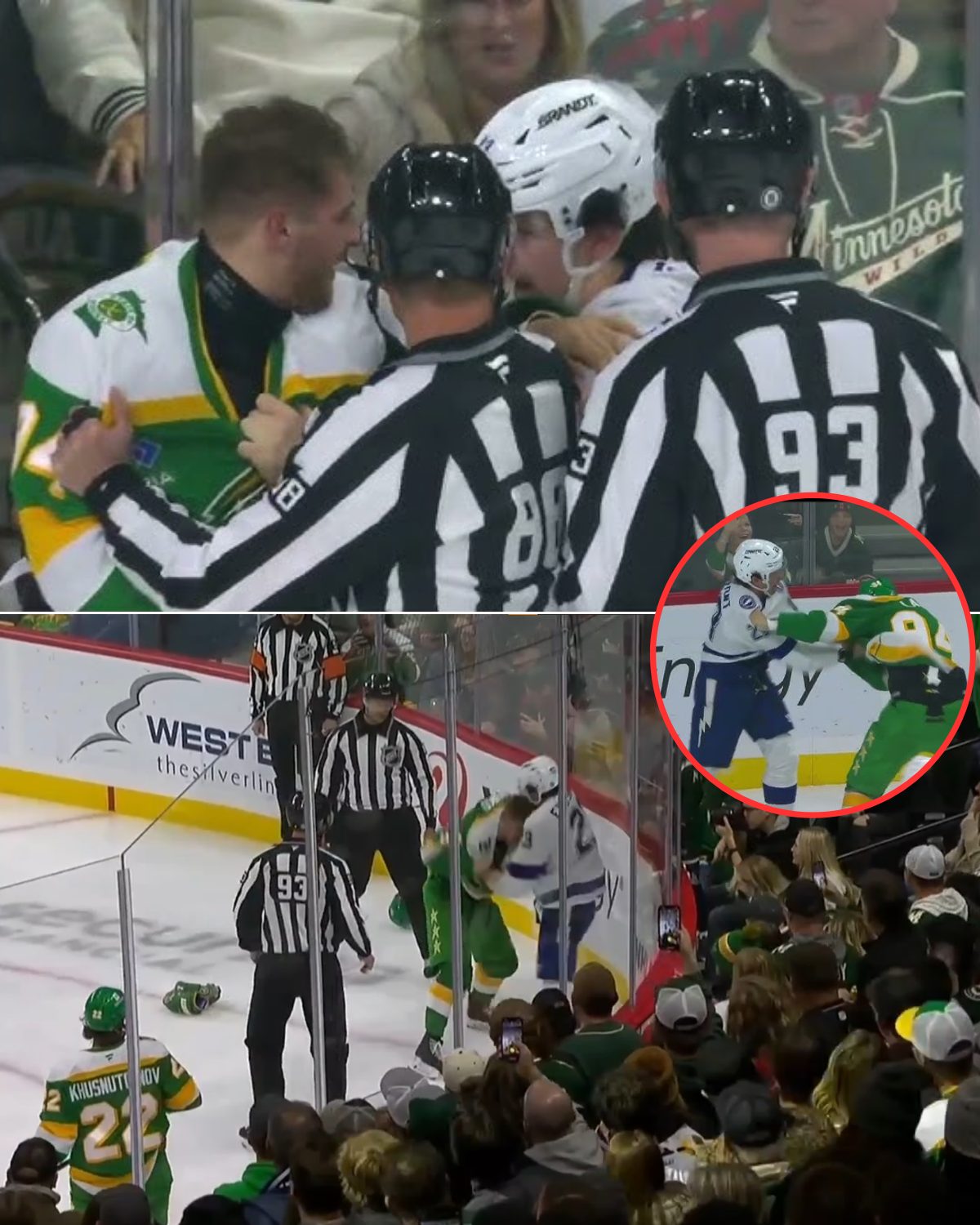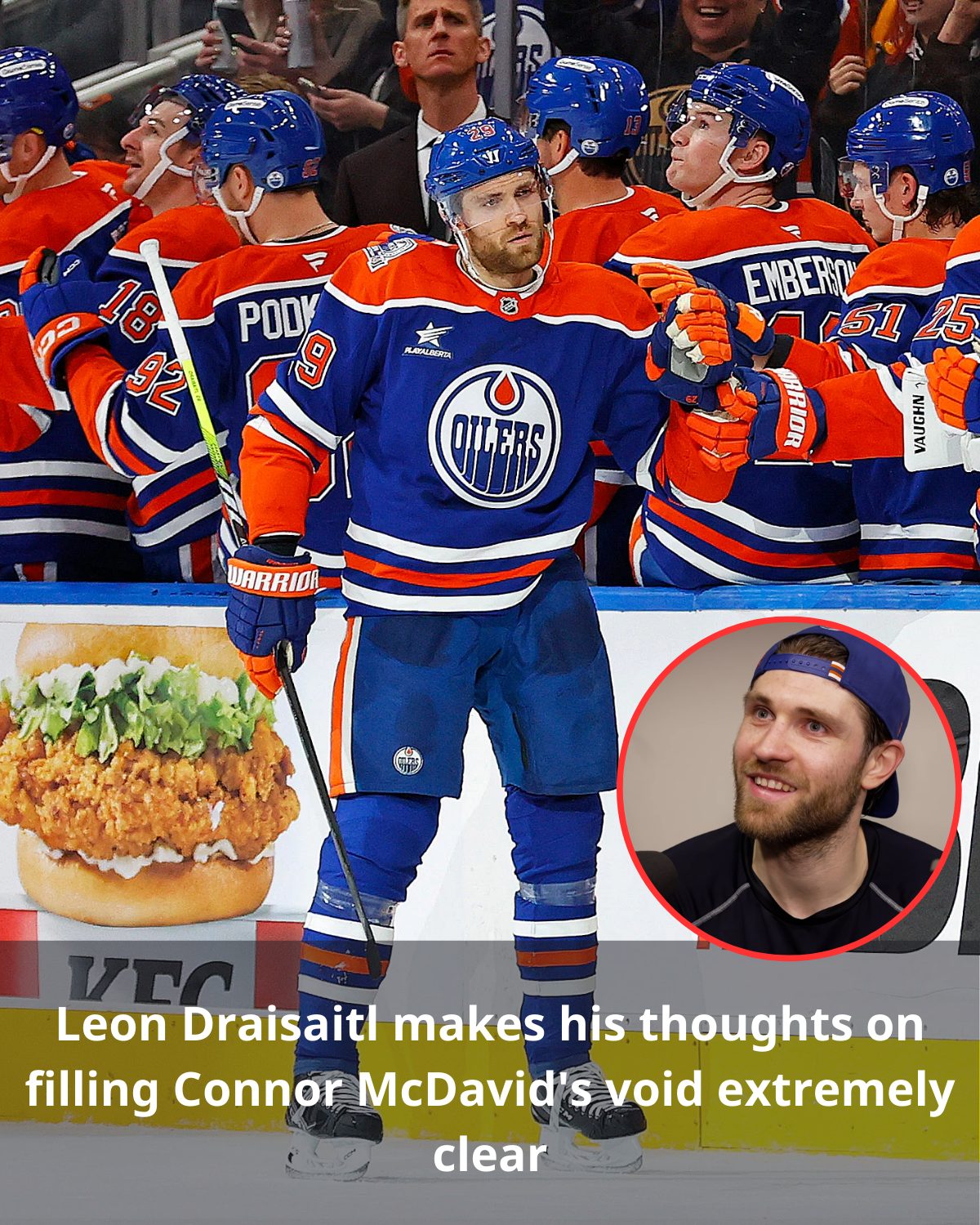Get a team-by-team look at where all 15 squads in the Western Conference rank after an active offseason.

The Thunder and Timberwolves land in the Top 5 in this offseason look at the Western Conference.
• Download the NBA App
How tough is the Western Conference?
Only four West teams finished below .500 last season, and two of them should be much improved this year. The Memphis Grizzlies are getting basically everybody (including Ja Morant) back from injury, while the San Antonio Spurs added a couple of key veterans (including one of the best point guards in league history) around one of the best 20-year-olds we’ve ever seen.
Only one of the 11 teams that finished .500 or better has seemingly taken a big step backward. And that team – the LA Clippers – still has Kawhi Leonard, James Harden and a solid supporting cast.
So if your favorite team appears to be too low in the rankings below, it’s only because there are too many good teams in front of them.
For these offseason rankings, we’re looking at each conference separately, with the Eastern Conference rankings having been published last week. All stats refer to the 2023-24 regular season unless otherwise noted. Last week’s rank is based on how team’s finished in the playoffs, Play-In and regular season.
Previously…
- May 20: Playoff Power Rankings: How the 4 conference finalists stack up
- This time last year: Offseason Power Rankings: Nuggets rank No. 1 in deep West
OffRtg: Points scored per 100 possessions (League Rank)DefRtg: Points allowed per 100 possessions (League Rank)NetRtg: Point differential per 100 possessions (League Rank)Pace: Possessions per 48 minutes (League Rank)
The league averaged 114.5 points scored per 100 possessions and 99.2 possessions (per team) per 48 minutes last season.
NBA.com’s Power Rankings, released every Monday during the season, are just one man’s opinion. If you have an issue with the rankings, or have a question or comment for John Schuhmann, send him an e-mail or contact him via threads.
Last Week:4↑
2023-24 record: 57-25
OffRtg: 118.3 (3) DefRtg: 111.0 (4) NetRtg: +7.3 (2) Pace: 100.9 (5)
Key addition(s): Alex Caruso, Isaiah Hartenstein, Nikola Topic
Key departure(s): Josh Giddey
Three numbers to know:
- The Thunder’s 57-25 record was the best mark among 109 teams that got at least 1/3 of their minutes from rookies or second-year players over the last 20 seasons.
- They have a league-high nine players under contract who shot the league average or better from 3-point range (minimum 100 3-point attempts) last season. No other team has more than seven.
- Caruso averaged 4.7 deflections per 36 minutes, second most among 266 players who played at least 1,000 minutes last season. He led the league with 5.2 deflections per 36 in 2022-23.
Key question: Will they get more shots than their opponents?
Caruso appears to be a great fit, given that Shai Gilgeous-Alexander and Jalen Williams will be doing most of the ballhandling. The Thunder led the league in the percentage of their 3-point attempts (80%) that came off the catch and he shot 40.6% on catch-and-shoot 3s last season. With his menacing defense, the Thunder will be the favorite to lead the league in opponent turnover rate for a second straight year.
Despite leading the league in turnover differential last season, they still had fewer shooting opportunities than their opponents last season because they were one of two teams – the Wizards were the other – that ranked in the bottom five in both offensive and rebounding percentage. That’s where Hartenstein (along with some added strength from Chet Holmgren) comes in. He ranked fourth in offensive rebounding percentage (12.9%) among 288 players who averaged at least 15 minutes in 40 games or more.
Last Week:3↑
2023-24 record: 57-25
OffRtg: 117.8 (5) DefRtg: 112.3 (8) NetRtg: +5.5 (4) Pace: 97.4 (26)
Key addition(s): Dario Saric, Russell Westbrook
Key departure(s): Kentavious Caldwell-Pope, Reggie Jackson
Three numbers to know:
- The Nuggets were the only team that had a winning record (18-15) in games in which they were outscored from 3-point range last season.
- They had the second best defense (112.7 points allowed per 100 possessions in 26 games) against the league’s top 10 offenses.
- The 958 regular-season minutes that the Nuggets’ starters played together were the most for any lineup in the last six seasons.
Key question: Is Christian Braun ready?
Braun averaged just 17 minutes in the playoffs, but is now the presumed starter with Caldwell-Pope’s departure. The offense should be fine as long as Nikola Jokic and Jamal Murray are healthy, but it may be tough for Braun to match Caldwell-Pope’s excellence on defense, where the Nuggets just had their best season (2.2 fewer points allowed per 100 possessions than the league average) in the 28 years for which we have play-by-play data.
Westbrook is a wildcard. He can certainly help the Nuggets in transition, where they ranked 23rd (19.4 points per game) last season. He’s also more of an off-ball cutter than Caldwell-Pope, so he might not be a terrible fit next to Jokic. More important may be that he keeps the Nuggets afloat when Jokic rests, with the Kia NBA MVP having had the league’s biggest on-off differential (minimum 1,000 minutes) in each of the last three seasons.
Last Week:1↓
2023-24 record: 50-32
OffRtg: 117.0 (8) DefRtg: 114.9 (18) NetRtg: +2.1 (15) Pace: 100.6 (7)
Key addition(s): Klay Thompson, Naji Marshall
Key departure(s): Derrick Jones Jr., Josh Green, Tim Hardaway Jr.
Three numbers to know:
- Over the two months from the first game they had Daniel Gafford and P.J. Washington through Game No. 80 (before they punted their final two games), the Mavs had the league’s second best record (21-7), ranking in the top six on both ends of the floor, with huge improvement on defense.
- In the conference semifinals, the Mavs scored 18.5 more points per 100 possessions than the Thunder allowed in the first round. And in the conference finals, they scored 11.4 more than the Wolves allowed in the conference semis.
- Luka Doncic (28.9, 9.5 and 8.1) was just the fifth different player in NBA history – joining LeBron James (twice), Nikola Jokic (twice) and Oscar Robinson (twice) – to average at least 28 points, eight rebounds and eight assists in the playoffs with a minimum of 10 games played.
Key question: Can their defense pick up where it left off?
The Mavs ranked sixth defensively over that 21-7 stretch, up from 22nd prior to the additions of Gafford and Washington. Doncic and Kyrie Irving were a part of that improvement, but it will be fascinating to see how well this team defends with Doncic, Irving and Thompson all on the floor together. Jones will be missed on that end of the floor; The Mavs allowed just 99.7 points per 100 possessions in his 283 regular season minutes alongside Gafford and Washington, but they allowed 120.0 per 100 in 200 minutes with Gafford and Washington on the floor without Jones.
Thompson should get plenty of open looks in this offense, though. His catch-and-shoot 3-point percentage of 39.2% over his three post-injury seasons is lower than it was in the three seasons prior (43.0%), but still strong and likely to earn the respect of opposing defenses.
Last Week:2↓
2023-24 record: 56-26
OffRtg: 114.6 (17) DefRtg: 108.4 (1) NetRtg: +6.3 (3) Pace: 97.8 (23)
Key addition(s): Rob Dillingham, Joe Ingles
Key departure(s): Kyle Anderson
Three numbers to know:
- The Wolves allowed 2.2 fewer points per 100 possessions than the league’s second best defense last season. That was the third biggest differential in the 28 seasons for which we have play-by-play data.
- They had the league’s best record (16-19) in games they trailed by double-digits.
- The conference finals were their second worst five-game stretch of defense (118.3 points allowed per 100 possessions) all season.
Key question: How much better does Anthony Edwards get?
Edwards has seen a jump in true shooting percentage (scoring efficiency) every season he’s been in the league, but his mark of 57.5% last season still ranked just 29th among 50 players with a usage rate of 25% or higher. His assist/turnover ratio (1.68) ranked 35th among that same group. He was more efficient in both regards in the playoffs, and there’s no reason why he won’t keep getting better and push the Wolves into the top half of the league offensively.
You have to wonder how much longer Conley (37 in October) can hold up as a starter, though he shot 95-for-208 (45.7%) on pull-up 3-pointers, the best mark for a player with at least 100 attempts in the 11 seasons for which we have tracking data. But the defense should still be there, despite the loss of a critical contributor (Anderson) on that end of the floor.
Last Week:7↑
2023-24 record: 49-33
OffRtg: 116.8 (10) DefRtg: 113.7 (13) NetRtg: +3.1 (8) Pace: 99.0 (15)
Key addition(s): Tyus Jones, Monte Morris, Mason Plumlee
Key departure(s): Eric Gordon, Drew Eubanks
Coaching change: Frank Vogel out, Mike Budenholzer in
Three numbers to know:
- The Suns ranked 10th offensively overall, but had the third most efficient offense (115.7 points scored per 100 possessions) against the league’s top 10 defenses. And those 26 games include two in which they scored more than 130 points per 100 possessions against the top-ranked Wolves.
- They were the league’s worst fourth-quarter team by a huge margin, getting outscored by 11.6 points per 100 possessions.
- As they got swept by Minnesota, they allowed 123.2 points per 100 possessions, the highest mark in the first round and 8.6 per 100 more than the Wolves scored in the regular season (when they ranked 17th offensively).
Key question: How much will a point guard help?
The Suns return a starting lineup that outscored opponents by 11.1 points per 100 possessions, the fourth best mark among 21 lineups that played at least 300 minutes. And as noted above, they had a great offense against the league’s best defenses.
But Jones was an incredible pick-up on a minimum contract, and he can help them on both ends of the floor. Not only has he led the league in assist/turnover ratio in each of the last six seasons, but he’s one of two players – Jimmy Butler is the other – that have had more steals than personal fouls in each of the last six. Most important may be taking some of the playmaking burden off Devin Booker and Bradley Beal, allowing those guys to be better on both ends of the floor.
Last Week:8↑
2023-24 record: 49-33
OffRtg: 116.5 (11) DefRtg: 111.9 (6) NetRtg: +4.6 (6) Pace: 98.7 (16)
Key addition(s): Dejounte Murray
Key departure(s): Jonas Valanciunas, Dyson Daniels, Naji Marshall, Larry Nance
Three numbers to know:
- The Pelicans were 49-33 with the point differential of a team that was 54-28. That was the biggest such disparity in the league.
- They were 11.0 points per 100 possessions better in the first half of games (plus-10.0, second best) than they were in the second half (minus-1.0, 19th). That was the league’s biggest half-to-half differential, and they were the only team without a win (they were 0-22) in games they trailed after the third quarter.
- They scored just 93.5 points per 100 possessions as they got swept by the Thunder in the first round. That was the lowest mark for any team in a playoff series in the last eight years. It was also 23.0 fewer per 100 than they scored in the regular season (116.5, 11th). The Pelicans ranked last in the first round in field goal percentage in the paint (47.6%), 3-point percentage (26.7%), and turnover rate (18.8 per 100 possessions).
Key question: Is this it?
At this point, the Pelicans have Daniel Theis, Jeremiah Robinson-Earl and a couple of rookies at the center spot. They could certainly be planning on playing Zion Williamson more at the five, having outscored their opponents by 8.6 points per 100 possessions with him on the floor without Valanciunas, Nance or Cody Zeller last season.
But that wasn’t a very big sample size: just 366 total minutes over Williamson’s 70 games (5.2 minutes per game). Playing him more at center would be more minutes with their best players on the floor. (Right now, if Murray, Williamson and Theis are starters, then two of CJ McCollum, Brandon Ingram, Herb Jones and Trey Murphy are coming off the bench.) But that could be more taxing on Williamson, as he’d probably be defending more pick-and-rolls, and it seems like this team will need to trade a forward for another big man at some point.
Last Week:10↑
2023-24 record: 46-36
OffRtg: 116.9 (9) DefRtg: 114.5 (15) NetRtg: +2.4 (13) Pace: 99.9 (11)
Key addition(s): De’Anthony Melton, Kyle Anderson, Buddy Hield
Key departure(s): Chris Paul, Klay Thompson, Dario Saric
Three numbers to know:
- The Warriors had the league’s biggest differential between their record vs. the 12 teams that finished at or below .500 (27-5, .844) and their record vs. the 18 teams that finished over .500 (19-31, .380) last season.
- They led the league with 48 games that were within five points in the last five minutes, going 24-24 in the clutch. They also led the league with 11 losses (they were 42-11) in games led after the third quarter.
- Opponents shot just 43.0% on attempts that Draymond Green defended, with the expected field goal percentage on those shots being 49.5%. That minus-6.5% was the biggest differential among 332 players who defended at least 250 shots last season.
Key question: Might they have upgraded this summer?
Thompson, Green and Stephen Curry had been together for 12 seasons and four championships, so losing Thompson is obviously an emotional blow, and it will be very strange seeing him in another uniform in October. But the Warriors might have gotten better this summer, with Anderson, Hield and Melton all seemingly good fits in their system. Hield has been a better shooter both inside and outside the arc than Thompson in each of the last two seasons (though Thompson probably takes tougher shots).
The Warriors could still use a little more size, and Lauri Markkanen would obviously be another upgrade if they’re willing to sacrifice some of their future and work out a trade with the Jazz. Jonathan Kuminga and Brandin Podziemski showed a ton of promise (and provided useful production) last season, but neither is nearly as special a player as either of the two championship cornerstones still left on the roster. So it would be a tough choice to make if the ball is in the Warriors’ court.
Last Week:9↑
2023-24 record: 46-36
OffRtg: 116.2 (13) DefRtg: 114.4 (14) NetRtg: +1.8 (16) Pace: 99.5 (14)
Key addition(s): DeMar DeRozan
Key departure(s): Harrison Barnes, Davion Mitchell
Three numbers to know:
- Each of the Kings’ top seven players in regard to total minutes played scored less efficiently (had a lower true shooting percentage) last season than they did in 2022-23.
- They were one of two teams – the Pacers were the other – that ranked in the top five in both ball movement (365 passes per 24 minutes of possession, second) and player movement (12.1 miles traveled per 24 minutes of possession, third), according to Second Spectrum tracking.
- Domantas Sabonis led the league with 4.1 assists on 3-pointers per game, second most for any player in the last six seasons.
Key question: Does DeRozan fit here?
The 15-year veteran, who turns 35 on Wednesday, can still get buckets and get to the line, and the Kings were worse in clutch games last season (20-19 with the league’s 18th-ranked clutch offense) than they were otherwise (26-17). But it may be a challenge for the player who ranks fourth in total isolations over the last three years (according to Second Spectrum tracking) to fit in with a team that moves the ball as much as the Kings.
Perhaps they stagger minutes so DeRozan is the first starter to sub out and then comes back to run the second unit. If they can have the best of both worlds while not taking a step backward defensively (more minutes for Keon Ellis would help in that regard), the Kings should stay in the mix for a top eight spot in the West.
Last Week:5↓
2023-24 record: 51-31
OffRtg: 117.9 (4) DefRtg: 114.6 (16) NetRtg: +3.4 (7) Pace: 97.9 (20)
Key addition(s): Derrick Jones Jr., Kris Dunn, Nicolas Batum
Key departure(s): Paul George, Russell Westbrook, Mason Plumlee
Three numbers to know:
- The Clippers ranked last in both ball movement (289 passes per 24 minutes of possession) and player movement (10.6 miles traveled per 24 minutes of possession), according to Second Spectrum tracking. They also ranked last in the percentage of their 3-point attempts that came off the catch (61%) and the percentage that were wide open (42%).
- Over their five years together, the Clippers were 31-19 (.620) in games (including playoffs) that Kawhi Leonard played without George. They were 52-42 (.553) in games that George played without Leonard.
- Terance Mann shot 175-for-263 (66.5%) in the paint, the best mark among 216 players 6-foot-8 or shorter with at least 100 attempts.
Key question: Can they play top 10 defense again?
The Clippers had top 10 defenses in each of the first three seasons with George and Leonard, even though the two stars played 31 and zero games respectively in that third season (2021-22). But they’ve been in the middle of the pack (17th and 16th) defensively in each of the past two seasons.
George is a terrific defender, but Batum, Dunn and Jones can all help the Clips on that end of the floor. The offense will likely take a step backward; the Clippers scored just 113.3 points per 100 possessions (and were outscored by 3.1 per 100) in 357 minutes with Leonard and James Harden on the floor without George last season. But if the defense can return to the top 10, this team will still be a tough out.
Last Week:13↑
2023-24 record: 27-55
OffRtg: 106.8 (30) DefRtg: 113.7 (12) NetRtg: -6.9 (26) Pace: 98.7 (17)
Key addition(s): Zach Edey
Key departure(s): Ziaire Williams
Three numbers to know:
- The Grizzlies saw the league’s biggest drops (from 2022-23 to ’23-24) in winning percentage, points scored per 100 possessions and point differential per 100 possessions.
- Their most-used lineup played just 68 total minutes, the fewest for any team’s most-used lineup in the 17 seasons for which we have lineup data.
- They were the only team that ranked in the bottom five in field goal percentage in the paint, midrange field goal percentage and 3-point percentage, finishing 29th in all three.
Key question: Do they have the right mix?
The Grizzlies just needed to get healthy. They’ve got six competent vets, along with young guys like Santi Aldama, GG Jackson II and Vince Williams Jr. who can contribute to a winning team. And even with all the injuries last season, they still had a strong defense.
But with Marcus Smart being one of those vets and Jaren Jackson Jr. likely to play more at the five than in previous (competitive) seasons, it will be a new mix. As noted above, no Grizzlies lineup played more than 68 minutes last season. But they did play 463 minutes with at least three of Ja Morant, Desmond Bane, Smart and Jackson on the floor, and they were outscored by 2.8 points per 100 possessions in those minutes. The Grizzlies aren’t just picking up where they left off 15 months ago.
Last Week:11
2023-24 record: 41-41
OffRtg: 113.7 (20) DefRtg: 112.8 (10) NetRtg: +0.9 (18) Pace: 99.6 (13)
Key addition(s): Reed Sheppard
Key departure(s): N/A
Three numbers to know:
- The Rockets were the league’s most improved team (from 2022-23 to ’23-24) in regard to winning percentage, point differential per 100 possessions, and points allowed per 100 possessions.
- They had the league’s biggest disparity between their record at home (27-14, tied for eighth best) and their record on the road (14-27, 22nd).
- The Rockets lead the league in continuity, with returning players accounting for 97% of their 2023-24 minutes. Their top 12 players in total minutes played remain on the roster.
Key question: Can their offensive improvement carry over?
The Rockets’ overall improvement last season was mostly about their defense, which they established early. But while the league overall was much worse offensively (113.1 points scored per 100 possessions) after the All-Star break than it was before the break (115.2) last season, the Rockets were better. After ranking 23rd offensively before the break (113.2), they ranked 15th after it (114.5), with that being the fourth biggest jump in points scored per 100 possessions.
The improvement came from a drop in turnovers, a jump in offensive rebounding percentage and the players you’d hope it would come from. Jalen Green and Amen Thompson had a combined true shooting percentage of 57.5% (right at the league average) after the break, up from 53.2% (well below the league average) before it. If they can pick up where they left off or get better after a summer of work, the Rockets might avoid tying the longest playoff drought in franchise history (five years).
Last Week:6↓
2023-24 record: 47-35
OffRtg: 115.4 (15) DefRtg: 114.8 (17) NetRtg: +0.6 (19) Pace: 101.4 (4)
Key addition(s): Dalton Knecht
Key departure(s): Taurean Prince
Coaching change: Darvin Ham out, JJ Redick in
Three numbers to know:
- The Lakers led the league in both restricted-area differential (plus-6.3 points per game) and free throw differential (plus-4.6 points per game) last season, with the latter being the biggest differential for any team in the last six years.
- They averaged 3.5 fewer shooting opportunities than their opponents, the league’s worst discrepancy. They were in the bottom 10 in both turnover differential and offensive rebound differential.
- LeBron James and Anthony Davis played 1,726 regular-season minutes together last season. That was their highest total in Davis’ five seasons with the Lakers and more than they played over the previous two regular seasons combined (1,463).
Key question: Is there a path to improvement?
Knecht was a fifth-year senior and is two years older than third-year guard Max Christie, so he could certainly be ready to contribute right away. But it’s hard to see how the Lakers are better than they were last season, when James (71) and Davis (76) each played more than 70 games.
We’ll see how Redick changes things up. Improving on that shooting-opportunity discrepancy by putting more emphasis on offensive rebounding (the Lakers ranked 29th in offensive rebounding percentage last season) could make a difference, and a healthier Jarred Vanderbilt (just 29 games played last season) would certainly help in that regard.
Last Week:14↑
2023-24 record: 22-60
OffRtg: 109.3 (26) DefRtg: 115.6 (21) NetRtg: -6.4 (25) Pace: 101.8 (3)
Key addition(s): Harrison Barnes, Chris Paul, Stephon Castle
Key departure(s): N/A
Three numbers to know:
- The Spurs were the league’s most improved team after the All-Star break, both in regard to winning percentage (11-16 vs. 11-44 before the break) and point differential per 100 possessions (minus-1.9 vs. minus-8.5).
- They were one of two teams – Charlotte was the other – to rank in the bottom 10 in each of the four factors on offense.
- They outscored their opponents by 9.0 points per 100 possessions in 806 total minutes with Tyus Jones, Devin Vassell and Victor Wembanyama on the floor together.
Key question: How real were those on-court numbers?
That last bullet point suggests that if you put some competent players around Wembanyama, the Spurs are awesome. And they’ll have a couple of more competent players on the roster this season. But some of that positive data was built up against other bad teams; Wembanyama was a plus-41 in just 53 minutes over two games against Portland, for example. And the Spurs were outscored by 5.7 points per 100 possessions in his 1,509 minutes against the 19 teams that finished at or above .500.
The 20-year-old is absolutely an impact player, but it’s a long way from 22-60 (and ranking in the bottom 10 on both ends of the floor) to beating good teams and contending for a playoff spot. The Spurs will be better this season, but how much better?
Last Week:12↓
2023-24 record: 31-51
OffRtg: 114.5 (18) DefRtg: 119.6 (30) NetRtg: -5.1 (23) Pace: 100.3 (10)
Key addition(s): Cody Williams
Key departure(s): Kris Dunn
Three numbers to know:
- The Jazz were 13.2 points per 100 possessions better at home (plus-1.5, 19th) than they were on the road (minus-11.7, 29th). That was the biggest differential for any team in the last four seasons. They had both the biggest differential on offense (6.2 points scored per 100 possessions) and its biggest differential on defense (6.9 allowed per 100) last season.
- They allowed 27.2 transition points per game, second most in 20 seasons of Synergy tracking. (They allowed one fewer transition point – total – than the 2023-23 Rockets). The 25.9 they allowed in 2022-23 was the third most.
- They were 18-0 when Jordan Clarkson recorded a positive plus-minus and 4-32 when he didn’t.
Key question: Will they keep Lauri Markkanen?
The Jazz actually outscored their opponents with Markkanen on the floor last season, but they were brutal (minus-9.5 points per 100 possessions) when he was off the floor. So a trade (depending on what they got back) could drop them down in the range of 15-20 wins.
Beyond the Markkanen decision, the focus will likely be on the development of second-year players Keyonte George and Taylor Hendricks. The former shot just 45.6% inside the arc (third worst among 161 players with at least 300 2-point attempts), while the latter played less than 900 minutes as a rookie.
Last Week:15
2023-24 record: 21-61
OffRtg: 107.6 (29) DefRtg: 116.6 (23) NetRtg: -9.0 (28) Pace: 97.9 (21)
Key addition(s): Deni Avdija, Donovan Clingan
Key departure(s): Malcolm Brogdon
Three numbers to know:
- The Blazers had just four wins (they were 4-41) in games that weren’t within five points in the last five minutes. That was the lowest total for any team in the last nine seasons.
- Their opponents shot 61.3% in the paint, the highest opponent mark in the 28 seasons for which we have shot-location data.
- They got 52.7% of their minutes, the league’s highest rate by a wide margin, from rookies or second-year players.
Key question: How much does Scoot Henderson improve?
The two teams that got more than 50% of their minutes from rookies or second-year players in 2022-23 – Houston and Oklahoma City – were the league’s two most improved teams last season. But the Blazers didn’t make big changes like the Rockets a year ago, and they (seemingly) don’t have stars on the level of Shai Gilgeous-Alexander and Jalen Williams.
But they do have a pair of guards – Henderson and Shaedon Sharpe – who could make big leaps in the next nine months. Henderson has nowhere to go but up given how much he struggled as a rookie, ranking last in effective field goal percentage among 174 players with 500 field goal attempts) and having the second worst on-court NetRtg among 222 players who averaged at least 20 minutes per game. It would be surprising if this wasn’t a fourth straight season in the bottom three in the Western Conference, but serious progress from the young guards would make the long-term outlook a lot brighter.




